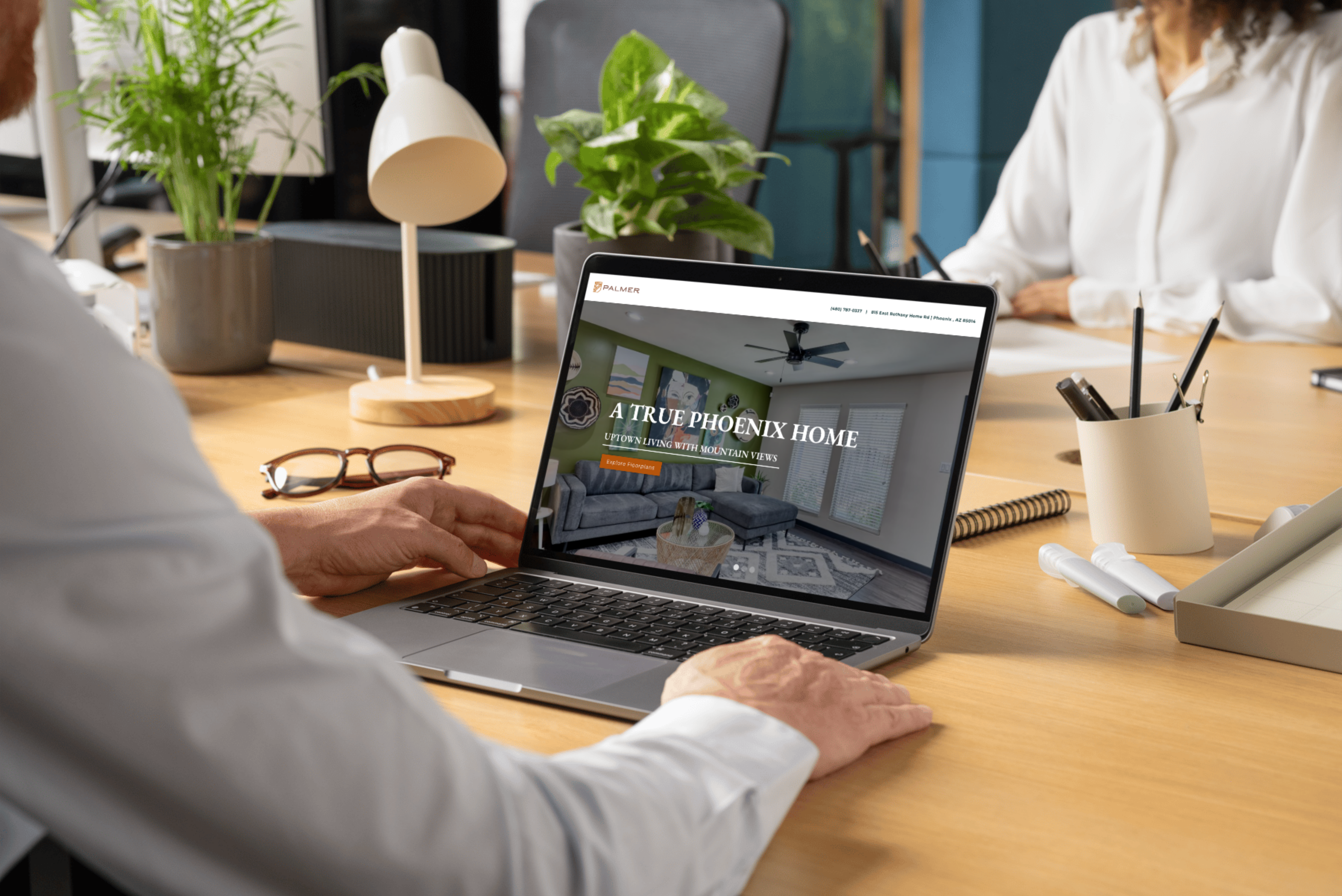How to Optimize Your Apartment Blog to Rank Higher in Google Search Results
Table of Contents
➢ Choosing Real Estate Keywords
Tired of constantly reading about the importance of property management SEO but never understanding how to achieve optimized blog content on a fundamental level? More specifically, do you want to know the exact steps you can take to rank higher in search results?
If so, then this blog about blogs is for you.
Aside from our killer branding, what makes our ultimate guide to property management SEO different from the others you’ve seen is that we practice a “show and tell” philosophy.
By breaking down an example of a highly optimized blog, we guarantee that you will step away from this resource with at least eight concrete changes you can quickly implement across your blog content and remember during future creation. While we used an off-topic blog about staying healthy while traveling for this property management SEO guide, the premise is still the same; it exemplifies remarkable optimization without falling into common property management SEO traps such as keyword stuffing.
Before the example, let’s review the basics of apartment keywords.
How to Choose Real Estate Keywords for Apartment Marketing
First, we recommend using a property management SEO keyword tool such as Google Keyword Planner or LinkGraph. Tools like these will provide you with information on what your audience is searching for online that you won’t be able to discern on your own.
Second, we recommend that you use keywords that meet these criteria for optimal performance:
Low Organic Difficulty
Your keyword(s) should have a low organic difficulty rating. This means there is a low level of competition for blogs targeting that same keyword.
Medium Search Volume
Target keywords with a medium search volume. If the search volume is too low, it won’t drive traffic. Likewise, if it’s too high, it is likely a large portion of those searchers are not in your target audience and won’t convert.
High Cost-Per-Click (CPC) Rate
Even if you aren’t participating in PPC advertising, it’s helpful to know that your direct competition is paying a high amount for those keywords because the traffic it drives is converting.
Want to learn more about the best property management SEO keyword tools? Check out our YouTube video for a quick breakdown.
How Often to Use Keywords in a Blog
Keyword stuffing is an easy trap, and Google will penalize you for it by not showing your articles in search results. Luckily, you can avoid that with a good ratio of word count to keyword use.
For more information on using property management SEO keywords in your blogs, check out our YouTube video for a quick breakdown!

Property Management SEO Blog Guide for Apartments

That is because two of this blog’s main keywords are in the title and right at the beginning.
Keywords are phrases that people commonly search. So when you include a keyword in your title, it catches your audience’s attention. It is a phrase your readers are familiar with and likely a part of their current query.
You should place your main targeted keyword at the beginning of your blog title for these reasons:
1. Tells Google what your blog is about
2. Helps drive related searches to your blog
3. Catches your audience’s attention
4. Ensures the keyword does not get cut off in the title of search results.
Sometimes, even after shortening it, you’re going to a title that gets cut off.
Check out our property management SEO YouTube video for more on the length of your headlines and titles!
Example of a keyword-less blog title that gets cut off (what you don’t want):

Example of a blog title that gets cut off but is still targeted (what you do want):

Lastly, notice that this is the one and only H1 tag. Each blog should have only one title and one H1 tag.
A blog title should be between 8 and 14 words.

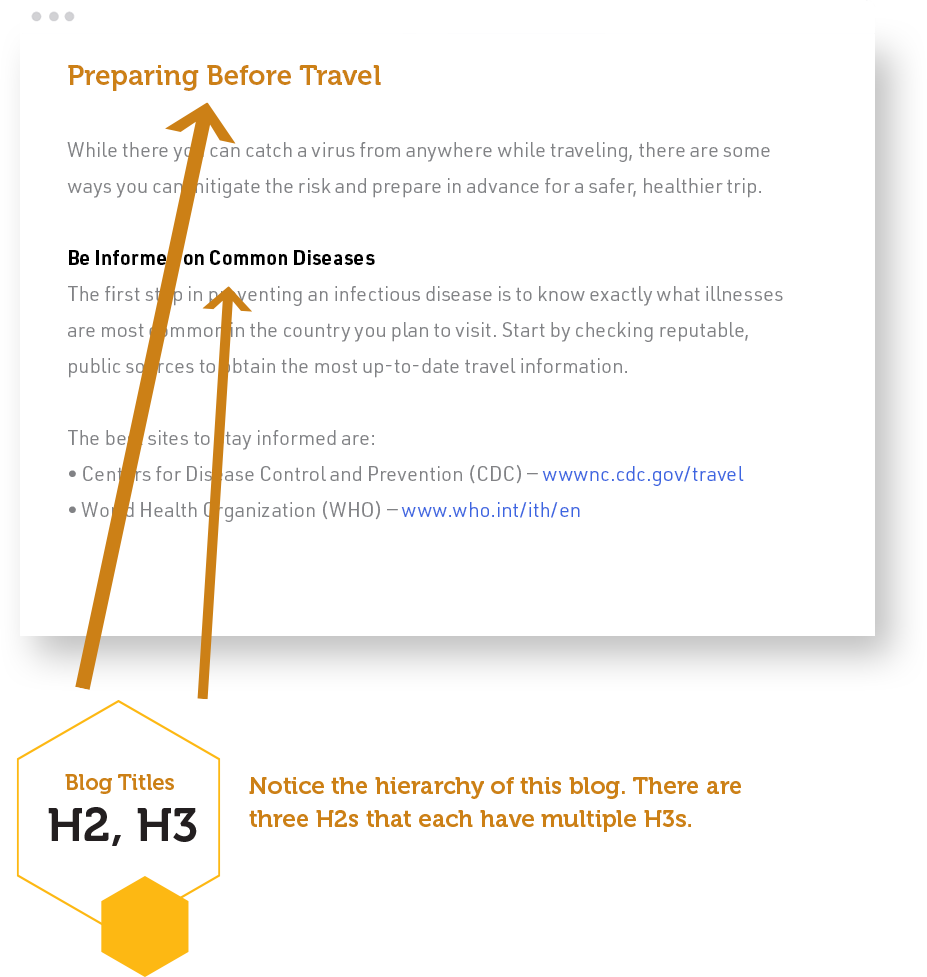
Underneath the single H1, there are three H2s that each has multiple H3s. Aim to structure all of your apartment blogs this way. By emphasizing subheads with H2 and H3 titling, you are provided clear information on your content to Google.
Databox ranks headers as the second-most important blog component for property management SEO (the title is the first, of course).
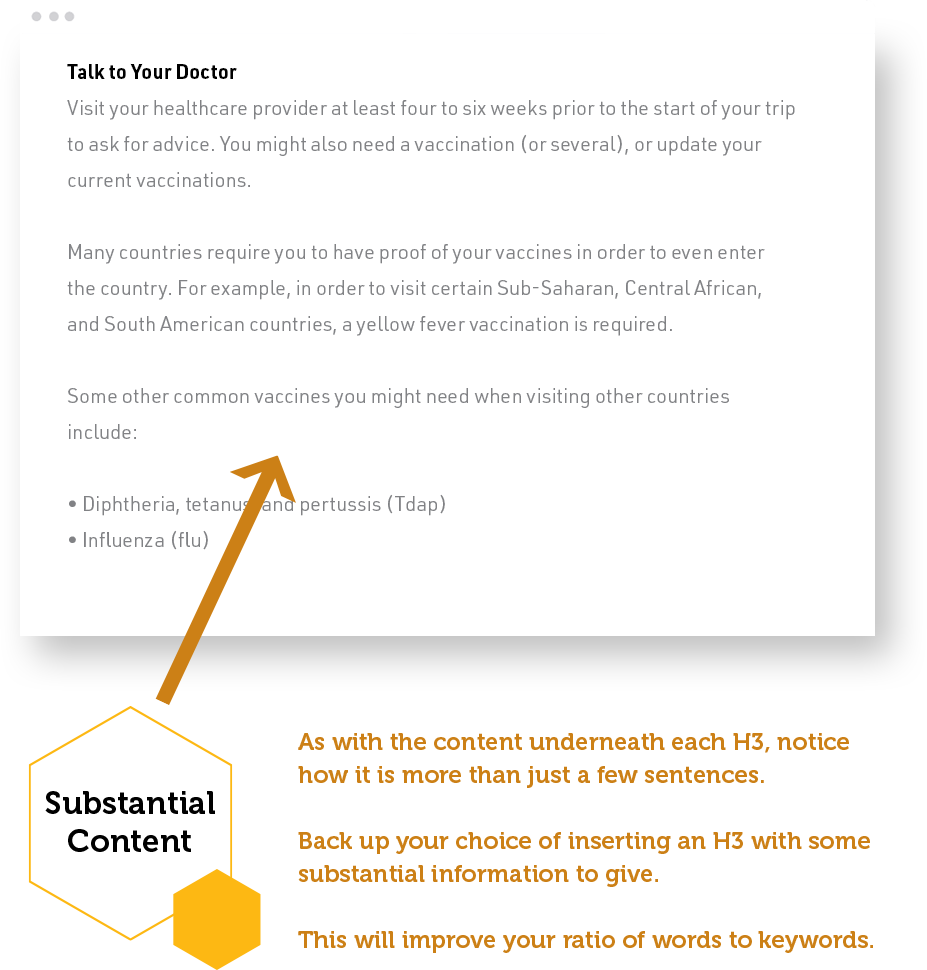
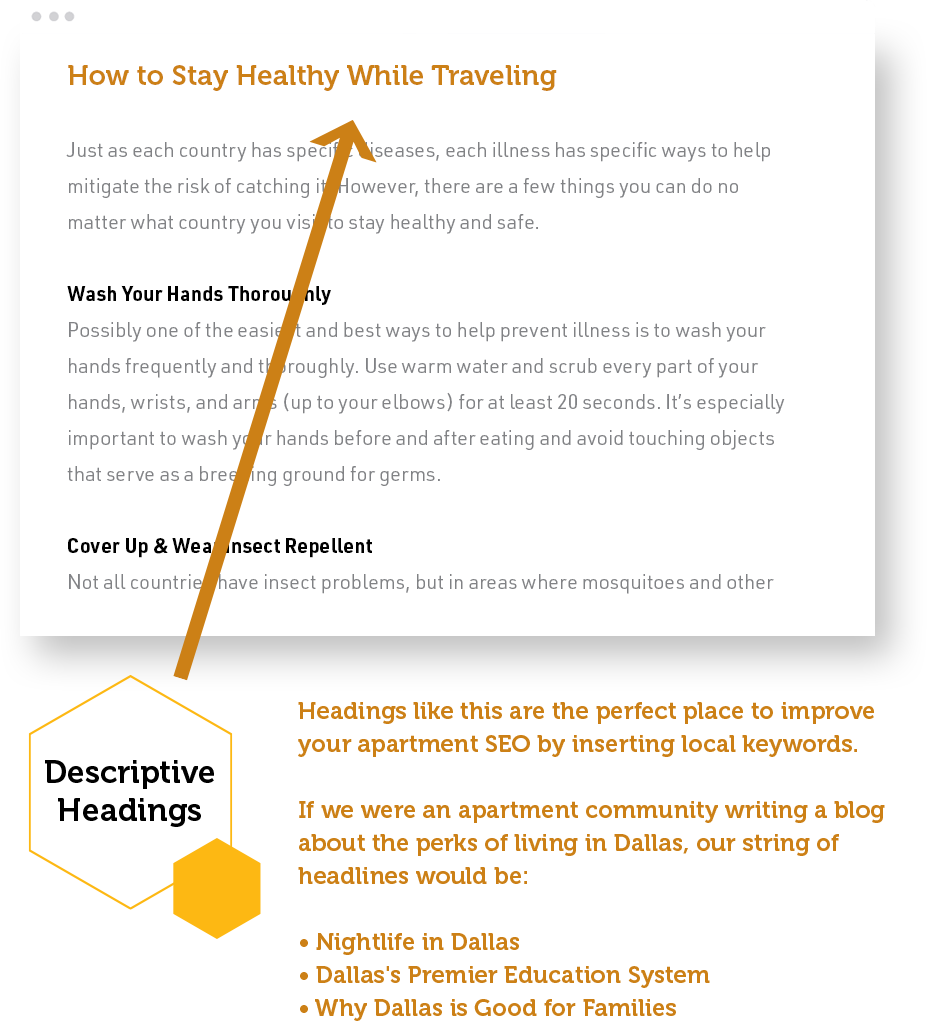

Note how the keywords are placed in the normal copy and not just the headers, such as with “common diseases” in this paragraph. It’s important to weave keywords throughout your content, not just in the big headlines.
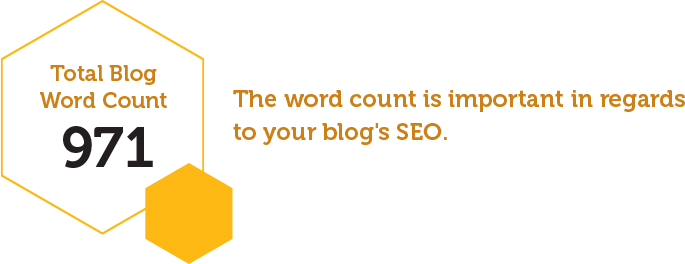
This is because a certain ratio of normal words to keywords is required to make Google happy enough with your content to show it high enough in search results.

For this property management SEO guide, we’ve removed some of the blog content to keep the information succinct. Our “Traveler’s Guide” blog’s original word count was over 1,200 — an optimal length.
The Unseen Components of Property Management SEO
There are a few important components for optimized blog content that are not necessarily visible when you look at a blog online.
Title Tag
The title tag is the title that shows up in search results, on the browser link, and social shares. Your blog’s title or H1 will be set as the title tag by default. However, you can edit the title tag to more targeted or concise. Your title tag can be the short version of your blog title.
You can go from this:

To this:
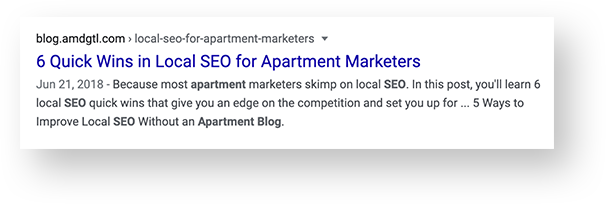
Meta Description
The meta description appears underneath the title tag. The optimal length is under 160 characters. You should strive to include both of your main keywords here, but they can often be very similar. If that is the case, include one.
Here is a great example of an optimized meta description for a multifamily blog:

Alt Text
The alt tag is the text you attach to any image you include in your blog, especially your main blog image. This is important because Google cannot comprehend or read images; it only analyzes text. By attaching text to your image, you tell Google what your image relates to and improve your property management SEO.
Apartment Marketing at Its Best
You know that you have achieved an optimized blog when you are easily driving increased web traffic to it — just like we did with this blog.
While the “Traveler’s Guide” was a great example of an optimized blog, so is the one you just read.
By using a good ratio of content to keywords for your property management SEO, creating a hierarchy of targeted headlines, and providing Google with all the information it needs to know about your blog, you can increase website traffic — and ultimately turn more leads into leases.




